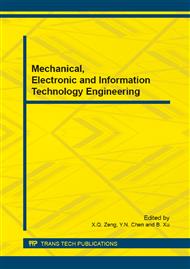p.563
p.568
p.575
p.581
p.585
p.590
p.594
p.598
p.603
Design and Realization of Virtual Campus on Mobile Platform
Abstract:
In this paper, we introduce a virtual campus on mobile platform in service recently. The system has several functions: exhibiting the environment of the campus, inquiring available information and interactive learning and so on. The procedure of realization has three parts: construction modeling, driving character model and interaction design. For construction modeling, we applied the prevailing 3D modeling software 3DMax to complete the task. Third-person perspective was adopted in driving character model and the script with the development platform-Unity3D works well after revising and it is more suitable for mobile platform. In terms of interaction design, we borrowed the method of role play game (RPG): time related events were combining with the buildings and we design some attributes for the roaming character, and the events could be triggered according to specified logically and temporal order. The interaction could lead the users to explore the virtual campus with interest, and thereby the aim of familiarizing the freshman students with basic workflow of the campus life quickly can be achieved. As the whole system is designed for mobile platform, it is convenient for using anywhere or anytime, the application effect therefore is better comparing with the traditional method of running a virtual campus on personal computer.
Info:
Periodical:
Pages:
585-589
Citation:
Online since:
March 2015
Keywords:
Price:
Сopyright:
© 2015 Trans Tech Publications Ltd. All Rights Reserved
Share:
Citation:


